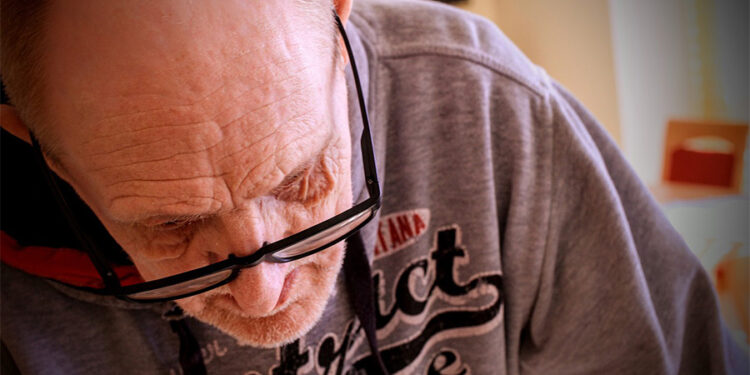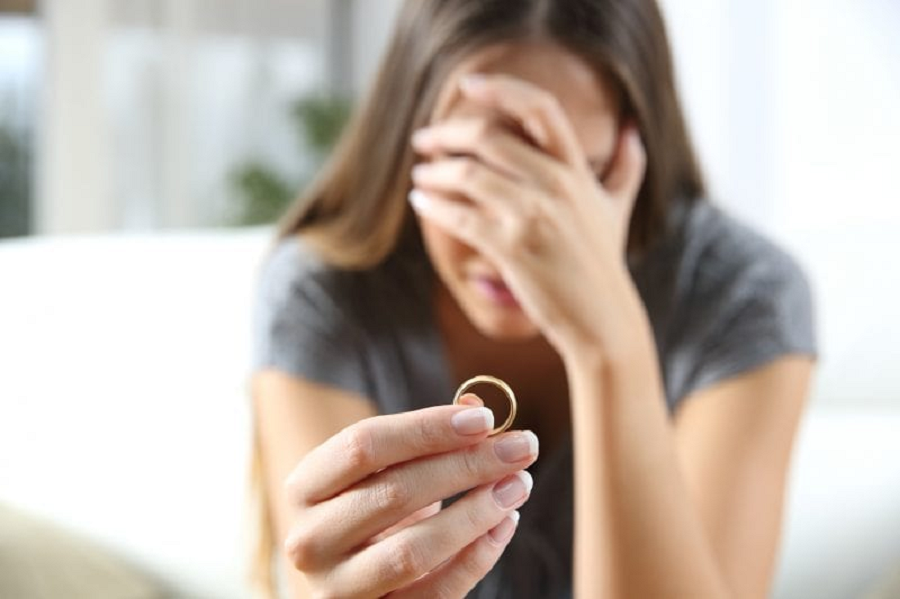Understanding Physical Indicators of Abuse

It’s really important to be aware of the potential signs of abuse in nursing homes. Sometimes, the most obvious clues are physical. If you’re visiting a loved one, keep an eye out for anything that seems off. It’s better to be cautious and investigate than to ignore something that could be a sign of harm.
Unexplained Bruises and Lacerations
Bruises happen, especially with older adults whose skin is more fragile. But, unexplained bruises cuts or broken bones or lacerations – especially if they appear in unusual places like the face, neck, or torso – should raise a red flag. It’s crucial to ask how these injuries occurred and to carefully consider the explanation. If the explanation doesn’t match the injury, or if there’s no explanation at all, it’s time to dig deeper.
Fractures and Sprains Without Clear Cause
Similar to bruises, fractures and sprains need a clear explanation. A simple fall can cause a fracture, sure, but frequent fractures or sprains without a reasonable explanation are concerning. Consider these points:
- Were there any witnesses to the fall?
- Does the resident have a history of falls?
- Is the injury consistent with the reported incident?
If the answers to these questions don’t add up, it could be a sign of physical abuse or neglect.
Signs of Restraint or Confinement
Restraints should only be used in very specific situations and with a doctor’s order. If you see marks on wrists or ankles, or if your loved one seems overly sedated, it could indicate improper use of restraints. Other things to watch for:
- Tying someone to a chair or bed.
- Using medication to control behavior without proper authorization.
- Confining someone to their room without a valid medical reason.
These are all serious violations of a resident’s rights. If you suspect improper restraint or confinement, it’s important to report it immediately. Also, be aware that pressure ulcers can be a sign of neglect, especially if a resident is left in one position for too long.
Identifying Emotional and Behavioral Changes
It’s not always bruises and broken bones. Sometimes, the signs of nursing home abuse are more subtle, showing up in a person’s behavior and emotions. These changes can be tricky to spot, especially if the resident already has cognitive issues, but being aware of them is super important. You really have to pay attention to the overall picture.
Sudden Withdrawal or Depression
If someone who used to be social suddenly becomes withdrawn, that’s a red flag. It’s not just about being a little sad; we’re talking about a noticeable change in their personality. They might stop participating in activities they used to enjoy, isolate themselves in their room, or just seem generally uninterested in things. Mood swings can also be a sign that something is wrong, so keep an eye out for those too. It’s easy to dismiss this as “just getting old,” but it’s worth investigating.
Increased Anxiety or Fear Around Caregivers
This one is huge. If your loved one seems consistently anxious or fearful, especially around certain staff members, that’s a major warning sign. They might flinch when a particular caregiver approaches, become agitated when that person is in the room, or even refuse care from them altogether. It’s not always easy to tell if it’s just a personality conflict or something more serious, but trust your gut.
Unusual Agitation or Aggression
While some residents might withdraw, others might become unusually agitated or aggressive. This could manifest as yelling, hitting, or just being generally combative. It’s important to remember that this isn’t necessarily their “true” personality; it could be a sign of distress or trauma. Nursing home abuse can cause these kinds of behavioral changes, so don’t dismiss them as just “being difficult.” Consider these points:
- Is the behavior new?
- Is it directed at specific people?
- Does it happen after certain events or interactions?
Recognizing Neglect and Poor Care
Neglect in a nursing home setting can manifest in various ways, often leading to serious health consequences for residents. It’s not always as obvious as a physical injury, but the signs are definitely there if you know what to look for. Sometimes it’s just a feeling that something isn’t right, and it’s important to trust your gut.
Unexplained Weight Loss or Malnutrition
Significant weight loss without a clear medical reason is a major red flag. It could mean the resident isn’t getting enough to eat, or that they’re not being properly assisted during mealtimes. Keep an eye out for things like:
- Clothes that are suddenly too big.
- A lack of appetite or refusal to eat.
- Visible signs of malnutrition, such as sunken eyes or thinning hair.
Poor Hygiene and Unsanitary Conditions
Personal hygiene is a basic need, and neglecting it can lead to infections and other health problems. If a resident consistently appears dirty or unkempt, it’s a sign that something is wrong. Look for:
- Unclean clothes or bedding.
- Body odor or unwashed hair.
- Dirty fingernails or skin.
Bedsores and Pressure Ulcers
Bedsores, also known as pressure ulcers, are injuries to the skin and underlying tissue caused by prolonged pressure. They are almost always preventable with proper care and repositioning. If a resident develops bedsores, it’s a clear indication that they’re not receiving adequate attention. Common areas for bedsores include:
- Hips
- Heels
- Tailbone
Dehydration and Lack of Fluid Intake
Dehydration can quickly become a serious problem, especially for older adults. Signs of dehydration include:
- Dry mouth or skin.
- Confusion or dizziness.
- Decreased urine output.
Make sure residents have easy access to fluids and are encouraged to drink throughout the day. If you notice frequent falls or repeated hospital transfers, it could be a sign of inadequate supervision and poor care. Also, be aware of inadequate lighting, heating, or air conditioning, as these environmental factors can directly affect residents’ health.
Detecting Financial Exploitation
Financial exploitation is a really awful thing that can happen in nursing homes. It’s when someone takes advantage of a resident’s money or property. It can be hard to spot, but there are some things to watch out for. It’s important to be vigilant and proactive to protect vulnerable individuals from this type of abuse.
Unusual Bank Account Activity
Keep an eye on bank statements. Are there withdrawals that don’t make sense? Maybe large amounts of money are being taken out, or there are frequent ATM visits when the resident can’t even get to an ATM. Look for any unexplained changes in banking patterns. It could be a sign that someone is misusing their account. For example, if you see unexplained bank withdrawals, that’s a major red flag.
Missing Personal Belongings
Has Mom’s favorite necklace disappeared? What about her watch or other valuables? Sometimes, things go missing, but if it’s happening a lot, it could be a sign of financial exploitation. It’s not always about money; sometimes, it’s about stealing and selling personal items.
Changes in Wills or Power of Attorney
This is a big one. Has the resident suddenly changed their will or power of attorney? Were they pressured into doing it? Did they even understand what they were signing? These changes can be a sign that someone is trying to take control of their assets. It’s important to investigate if you notice theft or fraud related to these documents. It’s a complex issue, but being aware is the first step.
Observing Environmental Red Flags
Unsafe or Unclean Living Spaces
Walking into a nursing home should feel safe and welcoming, right? But sometimes, the environment itself can scream that something’s wrong. Pay close attention to the overall cleanliness and safety of the facility.
- Are there spills that aren’t cleaned up promptly?
- Is the furniture broken or in disrepair, posing a hazard?
- Do you notice unpleasant odors that linger?
These aren’t just minor inconveniences; they can be signs of neglect and a lack of proper care.
Lack of Adequate Staffing
This is a big one. It’s hard for staff to provide good care if there aren’t enough of them. If you consistently see staff rushing around, looking stressed, or if residents are frequently left unattended, that’s a major red flag. It’s not just about the numbers; it’s about the quality of care. Understaffing can lead to:
- Delayed response times to calls for help
- Medication errors
- Inadequate supervision, increasing the risk of accidents
It’s worth asking the administration about their staffing ratios and how they ensure adequate coverage, especially during nights and weekends. If you notice nursing home neglect, it’s important to report it.
Restricted Access to Residents
Be wary if you find it difficult to visit your loved one or if the facility imposes unreasonable restrictions on visitation. While some rules are necessary for resident safety and privacy, overly strict policies can be a way to isolate residents and hide potential problems. Think about it:
- Are visits limited to specific hours with no flexibility?
- Are you required to sign in and out and be closely monitored during your visit?
- Do staff members seem reluctant to leave you alone with your loved one?
These could be signs that the facility is trying to control what you see and hear. Unsanitary conditions like soiled bedding are also a sign of neglect.
Addressing Sexual Abuse Concerns
Sexual abuse in nursing homes is a deeply disturbing issue that demands careful attention. It’s not always obvious, and victims may be unable or afraid to speak out. Recognizing the signs is critical for protecting vulnerable residents. It’s a tough topic, but we need to be aware.
Unexplained Genital Injuries or STIs
Any unexplained injuries to the genital area, bruising, or bleeding should raise immediate concern. Similarly, the sudden appearance of a sexually transmitted infection (STI) in a resident, especially one without a prior history, warrants a thorough investigation. These are red flags that cannot be ignored. It’s important to note any changes and report them immediately. You can download an infographic to help identify signs of elder abuse.
Fear of Specific Staff Members
Pay close attention to a resident’s reactions to certain staff members. Does the resident become visibly anxious, fearful, or withdrawn when a particular person is present? Do they refuse care from that individual? Such fear, especially if consistent, could indicate a problem. It’s not always easy to spot, but being observant can make a difference. Social workers can help by advocating for residents and ensuring their safety.
Difficulty Sitting or Walking
Sudden difficulty sitting or walking, especially if accompanied by pain or discomfort in the pelvic region, could be a sign of sexual assault. While there may be other medical explanations, this symptom should never be dismissed without careful evaluation. Physical changes can sometimes be the only visible clue.
Here are some things to keep in mind:
- Document everything you observe.
- Report any suspicions to the appropriate authorities.
- Ensure the resident receives immediate medical attention and support.
The Importance of Documentation and Reporting
It’s easy to think that if you suspect something is wrong in a nursing home, it’s enough to just mention it. But really, it’s way more important than that. You need to keep track of everything. Why? Because without solid proof, it’s tough to get anything done. Think of it like this: your observations are puzzle pieces, and the more you have, the clearer the picture becomes.
Maintaining Detailed Records of Observations
Okay, so you’ve noticed something. Now what? Write it down. Every single time. Don’t just rely on your memory because details fade. Include the date, time, who was involved, what exactly you saw or heard, and how the resident seemed to react. Be as specific as possible. For example, instead of writing “Resident seemed upset,” try “Resident was crying and stated, ‘They won’t let me call my daughter.'” Keep all your notes in one place, maybe a notebook or a file on your computer. This creates a timeline and helps identify patterns. If you see a pattern of abuse, it’s easier to take action.
Steps for Reporting Suspected Abuse
So, you’ve got your documentation. Now it’s time to report it. First, know who to report to. This could be the nursing home administrator, the state’s long-term care ombudsman, or even law enforcement. Each state has its own procedures, so look them up. When you report, be clear and concise. Stick to the facts. Don’t exaggerate or add your own opinions. Just present the evidence you’ve gathered. Be prepared to answer questions and provide copies of your documentation. Follow up to make sure your report is being taken seriously. If you don’t get a response, keep pushing. Remember, the safety and well-being of the resident is what matters most. It’s also important to understand the impact of emotional abuse on residents.
Here’s a quick rundown:
- Document everything meticulously.
- Know who to report to in your state.
- Follow up on your report.
Legal Protections for Whistleblowers
Reporting abuse can be scary. You might worry about retaliation or getting into trouble. But many laws protect whistleblowers – people who report wrongdoing. These laws can shield you from being fired, demoted, or harassed for speaking up. Know your rights. If you experience retaliation, seek legal advice. Don’t let fear silence you. Your voice can make a difference. Remember, doing the right thing is always worth it, even if it’s hard.






